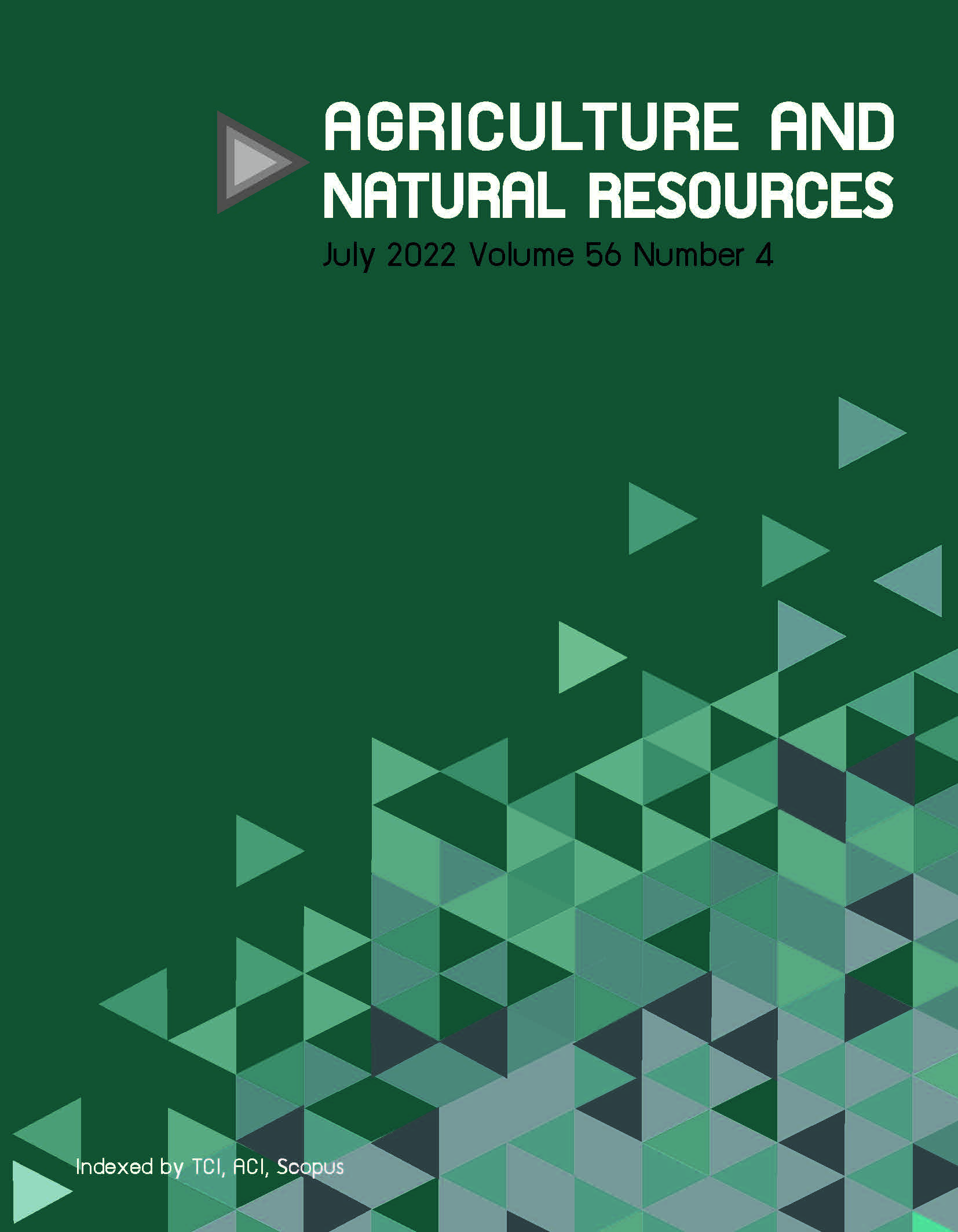Comparative assessment of groundwater recharge estimation using physical-based models and empirical methods in Upper Greater Mae Klong Irrigation Project, Thailand
Keywords:
Groundwater recharge estimation, Physical-based model, Soil water atmosphere plant (SWAP) model, Upper Greater Mae Klong Irrigation Project, Water and energy transfer between soil, plants and atmosphere under quasi steady state (WetSpass) modelAbstract
Importance of the work: Physical-based groundwater recharge modelling can help in studying the impacts of climate change on groundwater resources.
Objectives: To conduct a comparative assessment for large-scale groundwater recharge estimation in the Upper Greater Mae Klong Irrigation Project.
Materials & Methods: Two physical-based models (WetSpass and SWAP) were used to estimate groundwater recharge and the outcomes were compared with the results from empirical and water balance-based methods. Groundwater recharge modelling was investigated based on model type, data requirements, model complexity, model adaptability and model performance.
Results: The average annual recharges estimated using the WetSpass and SWAP models were 183.59 mm/yr and 133.63 mm/yr, respectively, or 20.19% and 13.98% of the average annual rainfall, respectively. The WetSpass model provided more robust and consistent recharge estimates than the SWAP model, based on yearly and seasonal recharges. In addition, the WetSpass model estimated the groundwater recharge rates in similar ranges to the recharges estimated using the empirical methods and the water balance-based approach with coefficient of determination values in the range 0.60–0.64. The SWAP model produced inconsistent values of groundwater recharge for some specific periods due to the non-uniformity of the rainfall data used.
Main finding: The distribution of simulated recharges based on the WetSpass model could be spatially displayed on a geographic information system-based platform to deliver fundamental input data for the groundwater system that could assist decision makers in the sustainable management of groundwater resources from both short-term and long-term perspectives.
Downloads
Published
How to Cite
Issue
Section
License
Copyright (c) 2022 Kasetsart Universityonline 2452-316X print 2468-1458/Copyright © 2022. This is an open access article under the CC BY-NC-ND license (http://creativecommons.org/licenses/by-nc-nd/4.0/),
production and hosting by Kasetsart University of Research and Development Institute on behalf of Kasetsart University.







